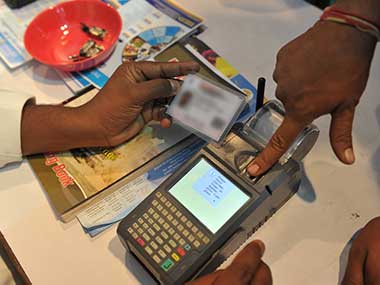Aadhaar programme came to an end, at least for the moment, with the pronouncement of the 1448-page long judgment this Wednesday. By a majority of 4:1, the Aadhaar project and the Aadhaar Act were partially upheld even as several crucial provisions of the Act were struck down as unconstitutional. The mandatory bank-account-Aadhaar linking and mobile phone-Aadhaar linking exercises were also struck down as unconstitutional. In his minority opinion, Justice DY Chandrachud, struck down the entire project and the Act as unconstitutional.
Initial reaction from the government was positive, even celebratory, that they stood vindicated that the majority has upheld the Act and the programme. However, the position is not that simple. Not only did the majority judgment deliver what some may call a-death-by-thousand-
cuts on the programme, it also called out the government, at several instances, on its patent illegality and unfair conduct.

One such instance was when discussing the propriety of issuing mandatory Aadhaar notifications under Section 7 of the Act even while the case was pending in the Supreme Court and even as interim orders were operating. The majority did hold that the issuance of notifications was not illegal because the statutory
position had been altered after the coming into force of the Aadhaar Act. However, it held that the conduct of the government was improper and smacked of unfairness as it proceeded to do it without the permission and a variation order from the court.
The minority opinion went further and held the conduct of the Union government was an affront to the rule of law and a violation of the government’s constitutional duty and stated “if we were not to enforce a punctilious compliance with our own directions by (the) government, that would ring a death-knell of the institutional position of the Supreme Court”.
Another instance was on the point of amendment in the Prevention of Money Laundering Act (PMLA) rules mandating bank-account-Aadhaar linking, an exercise under which citizens have been harassed and coerced by their banks into linking their Aadhaar numbers with their account numbers. The majority has pointed out that the defence by the government is based on mere “ritualistic incantation of the words ‘money laundering'”. It has further pointed out how the government has provided no explanation whatsoever on the reason to effectively cast the net of suspicion on every bank account and also not explained how linking Aadhaar with such a vast number of accounts is going to help with prevention of money laundering.
Again on the the point of mobile phone-Aadhaar linking, the government sought to use an order of the court, conveniently interpreting it for itself as some direction given to it, as a pretext for issuing a mandatory mobile phone-Aadhaar linking circular. This caused crores of people to queue up and link their Aadhaar numbers with their mobile numbers. Several of them faced great difficulty as biometric authentication repeatedly failed for them. The deep distress it had caused among the elders, the poor and others who were concerned about their mobile numbers being barred had been widely reported.
The minority opinion of Justice Chandrachud went further and directed: “The biometric information and Aadhaar details collected by telecom service providers (TSPs) shall be deleted forthwith and no use of the said information or details shall be made by TSPs or any agency or person or their behalf”, after terming the entire exercise both without sanction of a law as well as being a disproportionate invasion of privacy.


